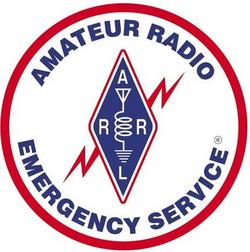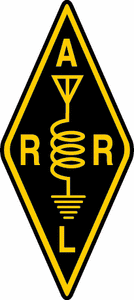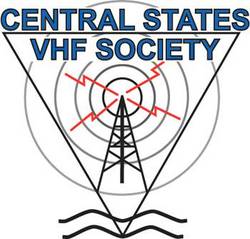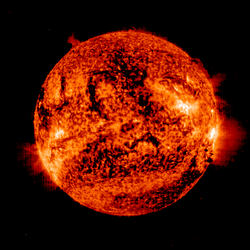 March 5, 2015 John E. Ross, KD8IDJ, Editor
| ||||||
Amateur Radio Parity Act of 2015 Introduced in Congress "The Amateur Radio Parity Act of 2015" -- H.R.1301 -- has been introduced in the US House of Representatives. The measure would direct the FCC to extend its rules relating to reasonable "The introduction of H.R. 1301 with so many original co-sponsors, so early in this session of Congress, is very encouraging," said ARRL President Kay Craigie, N3KN. "Several additional members of Congress already have agreed to be co-sponsors. This bill has momentum, but introduction is only the first step. Many of the next steps will be taken as ARRL members contact their US Representatives urging co-sponsorship and thanking them as they sign on to the bill." If Congress approves the legislation, and it is signed by the president, H.R. 1301 would require the FCC to amend its Part 97 Amateur Service rules to apply the three-part test of the PRB-1 federal pre-emption policy to include homeowners' association regulations and deed restrictions, often referred to as "covenants, conditions, and restrictions" (CC&Rs). At present, PRB-1 only applies to state and
local zoning laws and ordinances. The FCC has been reluctant to extend the same legal protections to include such private land-use agreements without direction from Congress. H.R. 1301 has been referred to the House Energy and Commerce Committee. Rep Greg Walden, W7EQI (R-OR), chairs that panel's Communications and Technology Subcommittee, which will consider the measure. The League had worked with Walden on the 2014 bill during the 113th Congress. Among H.R. 1301 initial co-sponsors is Rep Joe Courtney (D-CT), who attended the ARRL National Centennial Convention last summer to speak with League officials and those attending the event about the earlier bill. Craigie encouraged ARRL members to urge their US House members to sign on to the bill as a co-sponsor. If the House member is already a co-sponsor, call the member's local office or send an e-mail via the member's official website to express their thanks. She called on League members to encourage other hams to do the same, and to be sure to refer to the bill by its number, H.R. 1301. The ARRL has an H.R. 1301 resources page on its website "Remember what those pile-ups on the W1AW portable stations sounded like last year?" Craigie said. "Let's be that avid in calling for even greater support in Congress for this essential legislation." Number of US Amateur Radio Licensees at All-Time High The US Amateur Radio population continues to soar. At the end of 2014, the total number of US Amateurs in the FCC's Universal Licensing System (ULS) database reached an all-time high of 726,275 -- and the trend has continued in the first 2 months of 2015, which saw the total rise to slightly more than 727,000. The figures exclude expired licenses that are within the 2-year grace period, and club
station licenses. Outside of a little dithering last fall, growth in the Amateur Radio Service in 2014 was steady, according to figures compiled by Joe Speroni, AH0A, on his FCC Amateur Radio Statistics web pages. Over the past decade, the number of Amateur Radio licenses in the ULS database grew by some 8.1 percent. But 2014 was also a banner year for the ARRL Volunteer Examiner Coordinator (VEC). "For the first time in the ARRL VEC program's history, we have conducted more than 7000 Amateur Radio exam sessions in a year, an important milestone," said ARRL VEC Manager Maria Somma, AB1FM. "A total of 7216 ARRL-sponsored exam sessions were administered in 2014, compared to 6823 in 2013." Somma said the number of new licensees spiked to more than 33,000 in 2014, up by about 15 percent from the previous year. Successful license upgrades rose last year by an unprecedented 13 percent over a year earlier.
At the end of 2014, there were 136,405 Amateur Extra, 169,524 General, and 357,236 Technician class licensees -- all record numbers, Somma pointed out. While the number of Amateur Extra licensees grew in each month of 2014, the number of Technicians and Generals -- and of licensees overall -- faltered a bit last July and September. Last year's overall upward trend quickly recovered, however, during the final quarter of 2014. The General population also dipped briefly in May 2014, before rebounding. Somma believes the July and September dips may have been a result of applicants adjusting to the new Technician question pool that went into effect last July 1. "We always expect an adjustment period when a new question pool is introduced to the public, as VEs, teachers, and candidates must prepare new study and exam materials," she said. Somma called the dips "a normal part of the question pool cycle." Technician licensees comprise slightly less than one-half of the US Amateur Radio population. As of December 31, some 51,000 Advanced and 12,000 Novice licensees remained in the FCC database. The FCC no longer issues Advanced and Novice licenses, and their numbers continue to decline.
The state with the fewest Amateur Radio licensees in 2014 was North Dakota, with 1477, but in an overall upward trajectory since around 2009. Others with small ham populations included Delaware (1715 and growing), Rhode Island (1926 and dropping), Wyoming (1868 and headed up), and Vermont (2101 and slipping, after a bump in 2013 and 2014). These numbers may go a long way toward explaining why these are rare multipliers in the ARRL November Sweepstakes and other events. Club station licenses in the US numbered 11,501, according to Speroni's statistics. -- Thanks to Joe Speroni, AH0A; FCC ULS licensing statistics; ARRL VEC Southeast US ARES Teams Rally as Severe Winter Weather Strikes Amateur Radio Emergency Service (ARES) volunteers in the US Southeast went on alert in late February, as the region was faced with an unaccustomed ration of severe winter weather. Tennessee, which saw at least 30 winter storm-related fatalities, was placed on a Level II state emergency operations center activation level, indicating a major On February 26 Tennessee Section Emergency Coordinator Daniel O'Donovan, W4DOD, reported that Tennessee ARES volunteers in several counties were on standby, monitoring established nets, or actively staffing shelters and other locations. O'Donovan said the American Red Cross had opened six shelters in five counties, with 224 occupants, and that nearly 20,000 had lost power across five counties. States of emergency also were declared in Alabama and Georgia, as they and other states in the region that typically receive far milder winter weather confronted what the National Weather Service called "a historic winter storm." North Alabama reported snow accumulations of 6 inches or more, and vehicle traffic was brought to a standstill on some major highways. Alabama ARES volunteers were on alert throughout the day on February 25, and the American Red Cross had established shelter sites for displaced residents. On February 25 Alabama Section Emergency Coordinator Mike Watkins, WX4AL, elevated the section's ARES status to orange, invoking formal nets on the local and district levels, due to heavy icing of roads in North Alabama and requests for Amateur Radio operators to staff shelters and to assist emergency managers and the National Weather Service. On March 5, the FCC closed along with the rest of the federal government after a few more inches of snow contributed to the US capital's most significant cumulative snowfall since the so-called "Snowmageddon" of 2010. ARRL 2015 Field Day Gear, Supplies Now Available! ARRL Field Day -- the most popular ham radio operating event on the calendar -- is June 27-28, and official gear and supplies are now available from ARRL. Shirts, hats, pins, patches, and coffee mugs are a great way to Encourage family, friends, and fellow hams to take part in ARRL Field Day with recruitment posters and attractive "Get on the Air" (GOTA) pins for newcomers. All items are available for order now while supplies last and will begin shipping in early April. Clubs are encouraged to order early. Place a group order and pay just $12.50 shipping for all orders over $50 (while supplies last). Get your 2015 ARRL Field Day supplies from the ARRL online store or by calling 888-277-5289 in the US, Monday through Friday, from 8 AM to 5 PM Eastern Time (outside the US, call 860-594-0355).
ARRL encourages participants to register their Field Day operations using the FD Site Locator. E-mail your Field Day questions or call 860-594-0232. ARISS Offering Online Information Sessions for Prospective Contact Hosts The Amateur Radio on the International Space Station (ARISS) program coordinator will offer three online information sessions during Information sessions will be offered on Wednesday, March 11, at 2000 UTC, on Monday, March 16 at 2300 UTC, and on Thursday, March 26, at 2000 UTC. Advance registration is required. Contact ARISS to sign up for a session. The US ARISS contact proposal window will remain open until April 15. ARISS is seeking formal and informal educational institutions and organizations, individually or working together, to host an Amateur Radio contact with an ISS crew member between January 1 and June 30, 2016. ARISS is looking for organizations that have the potential to draw large numbers of participants and can integrate the contact into a well-developed educational plan. Details on expectations, audience, proposal guidelines, and proposal form, and dates and times of information sessions are on the ARRL website. E-mail ARISS with any questions. ARRL Centennial Convention Guest Speaker Presentations DVD Now Available
More than 3300 members and friends attended. Many convention visitors were entertained and informed by primary guest speakers at the event, and the ARRL now has compiled these presentations onto a DVD -- more than 110 minutes in all. The DVD includes these convention presentations.
The Guest Speakers Presentation DVD is $12.95 (plus $2.75 shipping & handling). Order Item No 1241. Northern California DX Foundation Makes Major Grant to DXpedition Group The Northern California DX Foundation (NCDXF) has donated $50,000 to the Intrepid-DX Group to support its planned activation of two Top 10 DXCC entities early next year -- South Sandwich Island (VP8S) and South Georgia Island (VP8G).
The team plans to be on each island for 10 days, with 8 full days on the air. Without grants of this type, it would not be possible to activate many of the most-wanted DXCC entities, NCDXF Vice President Glenn Johnson, W0GJ, said in announcing the grant. Johnson himself was part of the recent K1N Navassa Island DXpedition team. "Individual contributions to NCDXF have enabled us to make this grant possible," he noted. Located in the South Atlantic, the South Georgia and South Sandwich Islands are a British overseas territory. The only inhabitants are British government officials and staff. South Georgia currently is number 4 on ClubLog's DXCC Most Wanted List. South Sandwich is number 9. Malawi 7QAA DXpedition Will Help Kick Off New Africa All-Mode International DX Contest The 7QAA Multinational DXpedition to Malawi will take part in the inaugural Africa All-Mode International DX Contest over the March 14-15 weekend, operating SSB, CW, and digital modes. The DXpedition is scheduled begin on March 11. Unusual call signs such as 7QAA have been issued for at least one prior Malawi operation.
The DXpedition will upload logs to Logbook of The World (LoTW) following the DXpedition and to ClubLog daily. The second team will take part in the CQ World Wide WPX Contest (Digital) on RTTY and PSK. The team will listen on 50.110 MHz CW and SSB for any possible openings. The DXpedition is dedicated to Charles "Frosty" Frost, K5LBU (SK), who often operated from Africa. -- Thanks to The Daily DX North Dakota ARRL Member Marks 80th Anniversary as ARRL Member North Dakota radio amateur Alex Muggli, W0ZTL, was recently honored on the 80th anniversary of his ARRL membership -- a rare milestone. At the Bismarck Hamfest, Muggli, who still lives in his home town of Glen Ullin, received an 80-year membership plaque and a framed commemorative cover of QST from 1935, the year Muggli joined the ARRL. "Alex has been a ham since he was 17, and now is 97 years old," said ARRL Dakota Division Vice Director Kent Olson, KA0LDG, who joined North Dakota Section Manager Lynn Nelson, W0ND, in honoring Muggli. "His wife had him quit climbing his tower a couple of years ago, but he seems like he could still do it today."
Nelson said the presentation was a surprise to Alex and his wife, Alice. Their son Dave, N0JLY, and his wife Karen were on hand for the recognition. Born in 1917, Muggli got interested in radio as a youngster and built a cat's whisker "crystal set" as his first radio. He learned Morse code in the Boy Scouts -- he became an Eagle Scout -- and was first licensed as W9ZTL in 1937, a couple of years after he joined the League. He subsequently became W0ZTL, when the FCC reshuffled US call districts. Muggli served in the US Navy during World War II and was a radio and radar instructor. He later worked in his family's business, managing a grain elevator until he retired. Muggli remains active on the daily ARRL North Dakota traffic nets and still drives a car. "Many old hams and even the new ones remember Alex on 160 meters," said Nelson. "He is always active on 160 meters in the winter months and sends out many QSLs. Although Alex is pretty reserved, he is in good health, has lots of stories to tell, and is a special person to visit with at hamfests or on the air," he added. Past IARU Region 1 Chairman Louis van de Nadort, PA0LOU, SK Past International Amateur Radio Union Region 1 (IARU-R1) Chairman Louis van de Nadort, PA0LOU, of Zundert, Netherlands, died February 28 after a brief illness. Van de Nadort served as the
IARU Region 1 Chair from 1975 until 2002. He was a founding member of the IARU Administrative Council. "He will be sorely missed by his many colleagues and friends in IARU and around the world," said IARU Region 1 President Don Beattie, G3BJ. "On behalf of myself and the entire Executive Committee, I express our sincere condolences to his wife An and family." A member of VERON, the Dutch IARU member society, van de Nadort was licensed in 1955 after discovering ham radio during a stint in the Dutch Signal Corp, where he trained soldiers in telegraphy. He was a member of the First Class Operators Club (FOC) and active in CWops. Van de Nadort enjoyed DXing and CW and was a regular presence on the HF bands. He was on the DXCC Honor Roll and lacked only North Korea (P5) on CW. He was well known within the international Amateur Radio community and held honorary memberships in several other Amateur Radio societies. In Brief...
Getting It Right! The correct dates for the ARRL International DX Contest (Phone) are March 7-8. The announcement, "There's a Place for You in the ARRL International DX Phone Contest!" in The ARRL Letter, February 26, 2015, listed the wrong days! The K7RA Solar Update Tad Cook, K7RA, Seattle, reports: Sunspot activity continues to weaken. Average daily sunspot numbers dropped from 59 in the previous 7 days to 54.1 during the February 26 through March 4 period. Average daily solar flux actually rose a little, with values increasing from 116.3 to 122.9 over the same 2 weeks.
Predicted solar flux from NOAA and USAF is 120 for March 5-6, 115 for March 7-8, then 120, 125, 130, and 125 for March 9-12, 130 for March 13-15, 135 for March 16-17, then 130 and 125 for March 18-19, and 120 for March 20-21. Flux values then hit a minimum for the short term at 110 for March 24-25, then rising to 135 for April 12-13, according to the forecast. Predicted planetary A index is 8 for March 5-7, then 12, 15, 12, and 10 for March 8-11, 5 for March 12-13, then 8 and 5 for March 14-15, then 15 for March 16-17, 8 on March 18, 5 for March 19-21, then 15, 20, and 8 for March 22-24, 5 for March 25-26, then 15, 30, 25, 15, and 10 for March 27-31, and 8 for April 1-4. The predicted planetary A index at 30 on March 26 is quite high -- perhaps an echo of March 1-2, when the A index was 28. This weekly "Solar Update" in The ARRL Letter is a preview of the "Propagation Bulletin" issued each Friday. The latest bulletin and an archive of past propagation bulletins is on the ARRL website. In Friday's bulletin look for an updated forecast and an update on our 3-month moving average of daily sunspot numbers. Send me your reports and observations. -- Tad Cook, K7RA Just Ahead in Radiosport
See the ARRL Contest Calendar for more information. Upcoming ARRL Section, State, and Division Conventions and Events
Find conventions and hamfests in your area.
. . .
Subscribe to...
Free of charge to ARRL members...
| ||||||
 accommodation of Amateur Service communications to private land use restrictions. US Rep
accommodation of Amateur Service communications to private land use restrictions. US Rep 


 Once again, California far and away was home to the largest number of licensees among the 50 states, with 102,806 at the end of February. Texas was a distant second, with 51,022, Florida came in third, with 40,743, Washington was fourth, with 30,511, and Ohio was fifth at 28,256. With the exception of Ohio, the licensing trend in these states has been through the roof. In Ohio, ham radio numbers began to flag a bit in 2014, after holding steady for about the past 4 years.
Once again, California far and away was home to the largest number of licensees among the 50 states, with 102,806 at the end of February. Texas was a distant second, with 51,022, Florida came in third, with 40,743, Washington was fourth, with 30,511, and Ohio was fifth at 28,256. With the exception of Ohio, the licensing trend in these states has been through the roof. In Ohio, ham radio numbers began to flag a bit in 2014, after holding steady for about the past 4 years. disaster.
disaster. acknowledge -- and commemorate -- your participation in this annual event. New for 2015 are two T-shirt color options --
acknowledge -- and commemorate -- your participation in this annual event. New for 2015 are two T-shirt color options --  The complete 2015
The complete 2015  March for schools and organizations that are interested in hosting an ARISS Amateur Radio contact with a member of the International Space Station crew. These hour-long sessions are aimed at providing more information regarding US ARISS contacts and the proposal process. There will be an opportunity to ask questions. Prospective ARISS contact sponsors are not required to attend an online information session, but they are strongly encouraged to do so.
March for schools and organizations that are interested in hosting an ARISS Amateur Radio contact with a member of the International Space Station crew. These hour-long sessions are aimed at providing more information regarding US ARISS contacts and the proposal process. There will be an opportunity to ask questions. Prospective ARISS contact sponsors are not required to attend an online information session, but they are strongly encouraged to do so. The ARRL is making available a DVD of ARRL Centennial Convention
The ARRL is making available a DVD of ARRL Centennial Convention  "It is only through the generosity of amateur organizations such as the NCDXF that we can make this DXpedition possible," the Intrepid-DX Group said in accepting the grant. "Our destination is very remote and costly to reach. This grant by the NCDXF gives us the foundation with which we can solidify our plans and move forward with successful activations of these rare islands." The Intrepid-DX Group anticipates a total budget of approximately $425,000.
"It is only through the generosity of amateur organizations such as the NCDXF that we can make this DXpedition possible," the Intrepid-DX Group said in accepting the grant. "Our destination is very remote and costly to reach. This grant by the NCDXF gives us the foundation with which we can solidify our plans and move forward with successful activations of these rare islands." The Intrepid-DX Group anticipates a total budget of approximately $425,000. The 7QAA Multinational DXpedition will employ two teams -- one for CW and RTTY -- which will operate from March 11 until March 21, and a second for SSB and RTTY, which will be on the air from March 22 until April 1. Both will operate on 160 through 10 meters.
The 7QAA Multinational DXpedition will employ two teams -- one for CW and RTTY -- which will operate from March 11 until March 21, and a second for SSB and RTTY, which will be on the air from March 22 until April 1. Both will operate on 160 through 10 meters.

 A Reminder: The ARRL International DX Phone Contest is March 7-8! The SSB weekend of the
A Reminder: The ARRL International DX Phone Contest is March 7-8! The SSB weekend of the  Arkansas ARRL Member Aids Accident Victim: According to a
Arkansas ARRL Member Aids Accident Victim: According to a  International DX Convention (Visalia) Advance Registration Available Until April 8: Advance registration for those planning to attend the
International DX Convention (Visalia) Advance Registration Available Until April 8: Advance registration for those planning to attend the  FT5ZM DXpedition Wins DxCoffee's Best Communication Award 2014:
FT5ZM DXpedition Wins DxCoffee's Best Communication Award 2014:  K1N DXpedition to Navassa Island Okayed for DXCC Credit: The ARRL DXCC Desk has approved the January/February 2015 K1N DXpedition to Navassa Island for DXCC credit. DXCC is Amateur Radio's premier award that hams can earn by confirming on-the-air contacts with 100 DXCC "
K1N DXpedition to Navassa Island Okayed for DXCC Credit: The ARRL DXCC Desk has approved the January/February 2015 K1N DXpedition to Navassa Island for DXCC credit. DXCC is Amateur Radio's premier award that hams can earn by confirming on-the-air contacts with 100 DXCC " NASA Soundbites Suitable for Ringtones Include Juno "HI" CW Message: NASA is offering a
NASA Soundbites Suitable for Ringtones Include Juno "HI" CW Message: NASA is offering a  Central States VHF Society Issues Call for Conference Papers: The Central States VHF Society (
Central States VHF Society Issues Call for Conference Papers: The Central States VHF Society ( The vernal equinox is only 2 weeks away on March 20, and around this time the Northern and Southern hemispheres are bathed in an equal measure of solar radiation. We should enjoy enhanced HF radio propagation as a result. This weekend the
The vernal equinox is only 2 weeks away on March 20, and around this time the Northern and Southern hemispheres are bathed in an equal measure of solar radiation. We should enjoy enhanced HF radio propagation as a result. This weekend the 







